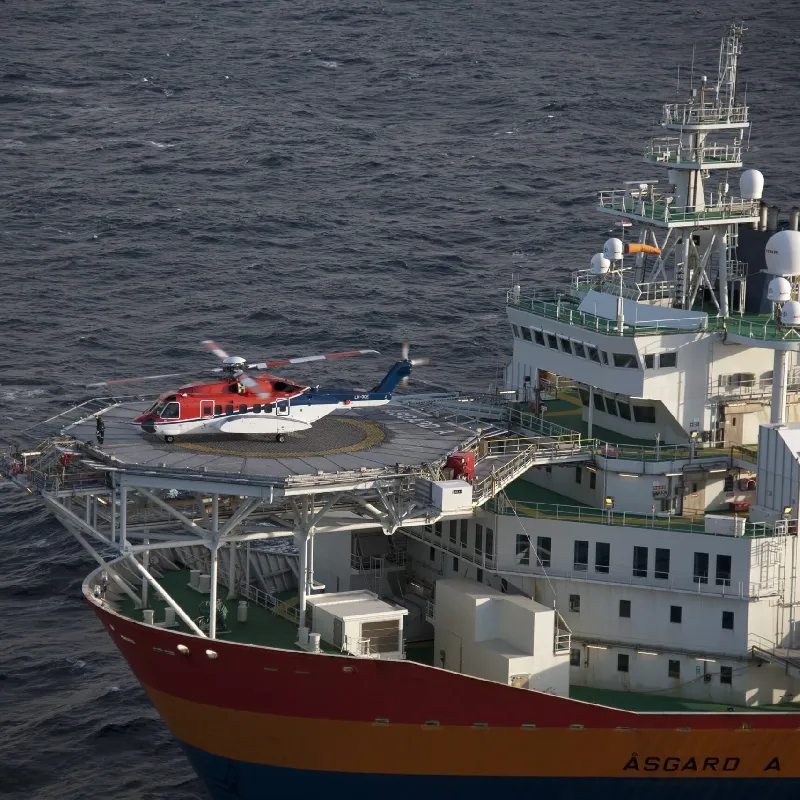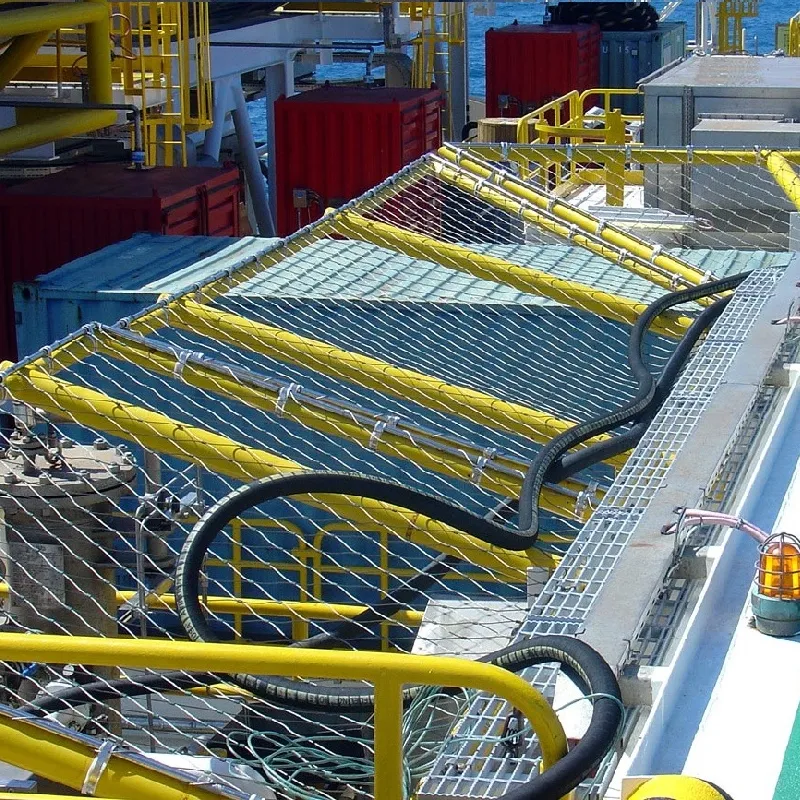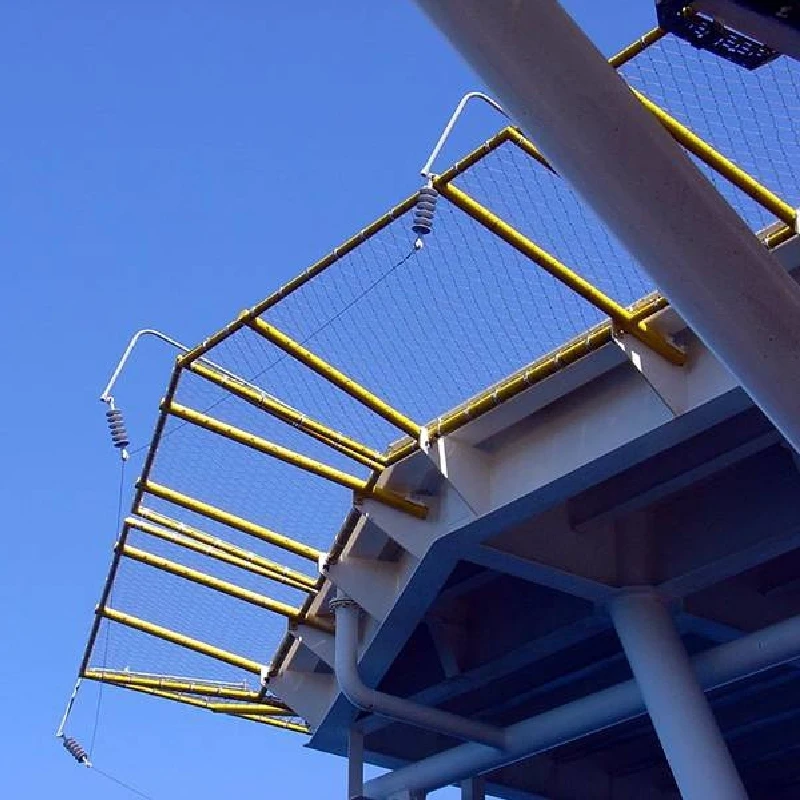- Industrial zone, South of Anping Town, Hengshui, Hebei, China.
- sales@hfpetromesh.com
- +86-18931809706
Helideck Perimeter Safety Nets - IMO Compliant, UV-Resistant
If you’ve worked around offshore or rooftop pads, you already know the unsung hero is the net on the edge. Helideck Perimeter Safety Nets are the last line of defense when wind, rotor wash, and human error line up in exactly the wrong way. I’ve watched crews step out on stormy days; the net quiets everyone’s nerves—and not just symbolically.

Industry snapshot and why it matters
Offshore activity is back, hospital heliports are busier, and certification audits are getting tighter. Trends we’re seeing: stainless wire-rope meshes replacing older polypropylene in harsh marine zones, more factory drop-testing, and modular brackets that simplify retrofits. To be honest, procurement teams care about lifecycle cost and audit-ready paperwork as much as mesh size these days.

What the product is (and isn’t)
Perimeter Safety Netting is the surrounded structure on a helicopter landing deck that helps prevent tools and people from falling. Origin matters: this system is engineered and assembled in the industrial zone, south of Anping Town, Hengshui, Hebei, China—an area with a serious mesh-making pedigree. Many customers say the kits feel “overbuilt,” which, frankly, is what you want when the wind howls.
Specification highlights
| Net width (CAP 437 guidance) | ≈ 1.5 m outboard, inner edge flush with deck |
| Mesh aperture | ≈ 80–100 mm (knotless preferred to reduce injury) |
| Rope/wire | UV-stabilized PP/PE rope (≥ Ø10 mm) or 304/316/316L wire rope (Ø3–4 mm) |
| Frame/brackets | Marine-grade stainless steel with hot-dip galvanized options |
| System load tests | Factory drop test with 100 kg bag from ≈1.2 m; strand tensile ≈1.0–1.6 kN (real-world use may vary) |
| Service life | ≈ 8–15 years depending on UV/salt exposure and inspections |
| Certifications/support | Designed to align with CAP 437, ICAO Annex 14 Vol II, IMO guidance; project-specific ITP/QC docs |

Process flow (how it actually gets built)
- Site data & design: deck radius, beam spacing, corrosion category, snow/icing assumptions.
- Materials: UV PP/PE rope or 316L wire-rope mesh; stainless posts, hinged brackets, quick-release lashings.
- Fabrication: CNC cutting, swaging, TIG welding; passivation for stainless.
- Testing: mill certs (EN 10204 3.1), salt-spray on samples, drop test, dimensional check.
- Packaging: tagged panels, hardware kits, install drawings, torque schedule.
- After-sales: inspection checklist (quarterly), spares, repair lacing kits.
Where it’s used
Offshore platforms, FPSOs, drillships, coast guard cutters, hospital heliports, and high-rise rooftop pads. Advantages? Better edge protection, compliance peace of mind, and—surprisingly—less visual clutter with modern wire-mesh styles.

Vendor comparison (real-world buying criteria)
| Vendor | Material scope | Lead time | Cert/docs | Notes |
|---|---|---|---|---|
| H&F PetroMesh (Anping) | PP/PE rope & 304/316/316L wire-rope; full bracket kits | ≈ 2–5 weeks | ITP, 3.1 certs, factory drop-test | Custom radii; cost-efficient |
| Vendor A (EU) | Primarily stainless wire mesh | ≈ 6–8 weeks | CE traceability set | Premium pricing |
| Vendor B (US) | Poly rope systems | ≈ 4–6 weeks | Test reports on request | Fast retrofit hardware |
Customization that actually helps
Bracket geometry for odd beam spacing, mesh aperture for glove safety, anti-spark covers near fuel points, color-coding for zones, and removable sections for gangways. Many crews prefer Helideck Perimeter Safety Nets with a subtle 10–15° outboard dip—better energy absorption, less bounce-back.
Case notes and feedback
North Sea operator: “Install took a day less than planned; brackets lined up first time.” A hospital facilities team told me the newer wire-rope Helideck Perimeter Safety Nets felt sturdier in winter icing, with fewer post-flight snags on medical gear.
Standards and testing
Designs are aligned with CAP 437 guidance on width, mesh, and layout, ICAO Annex 14 Vol II provisions, and IMO recommendations for shipboard helidecks. Final acceptance should include a visual inspection, torque verification, and a controlled drop test where permitted by the operator’s safety case.
References:
- UK CAA CAP 437: Offshore Helicopter Landing Areas – Guidance on Standards.
- ICAO Annex 14, Volume II: Heliports.
- IMO MSC.1/Circ.1331: Guidelines for helicopter facilities on ships.
- ABS Guide for Helicopter Landing Areas (contextual engineering reference).
-
Shaker Screen for Sale – Durable, API-Rated, Fast ShippingNewsNov.17,2025
-
Industrial Steel Grating — Durable, Anti-Slip, GalvanizedNewsNov.17,2025
-
Industrial Steel Grating: Durable, Anti-Slip, GalvanizedNewsNov.17,2025
-
Shale Shaker Screen – Durable Mesh, Factory Price, OEMNewsNov.17,2025
-
Shale Shaker Screen Factory | API Quality, OEM, Fast ShipNewsNov.17,2025
-
Metal Grating for Sale – In Stock, Custom Sizes, Quick ShipNewsNov.10,2025